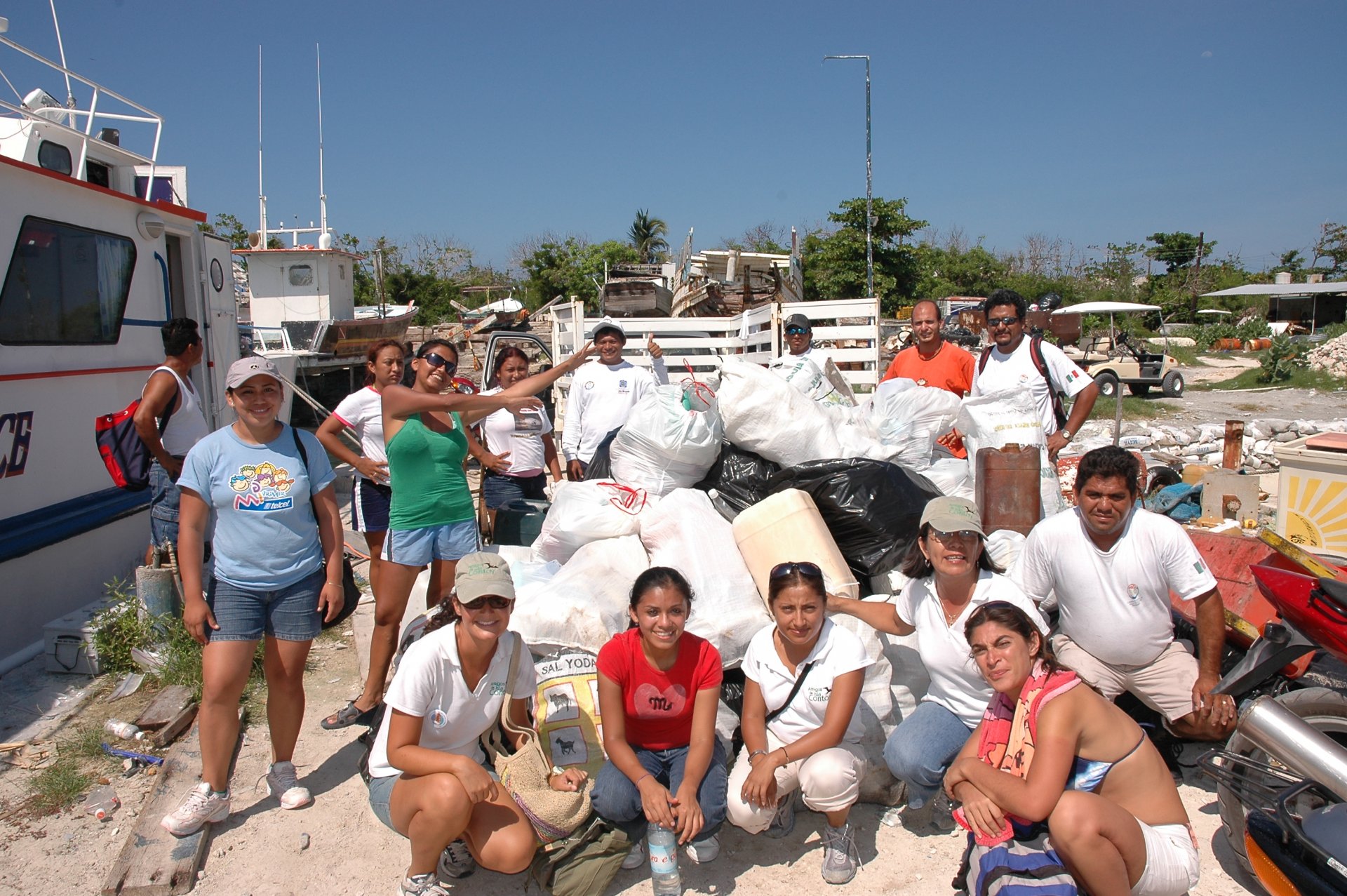- Lighthouse Foundation
- Projects
- Mexico: Sustainable Caribbean
- Project Archive Mexico
- Waste separation and recycling on Isla Mujeres
Waste separation and recycling on Isla Mujeres
Even though Isla Contoy is situated far off the coast, the beaches of the national park are not spared from the rubbish washed up on its shores. One source of plastic waste is the neighbouring island of Isla Mujeres with its numerous hotels and restaurants and waste management is a significant problem for the community. The Amigos de Isla Contoy are campaigning for the introduction of environmentally compatible processes for handling organic waste material and waste packaging that can be proved to work in practice and are achievable over the long term. Isla Mujeres is working towards becoming a “sustainable community” and thereby securing its status as an attractive tourist destination.
An important step, in addition to convincing the community representatives, is motivating the population to participate in waste collection and disposal into organic and inorganic elements. Members of Amigos de Isla Contoy conducted door-to-door visits to discuss the relevant issues and deliver information leaflets.
A community programme on separating and collecting reusable materials was drawn up after a more exact analysis of the waste volume and its qualitative composition was produced in co-operation with the University of Cancun and a central waste disposal facility was set up by the community. At the same time, discussions were held on possibilities to reduce the volume of daily waste, especially with catering establishments.
The outcome of this work, the proposed next steps and the demands on the community were presented to the population at a range of events. Particular attention was paid to children and teenagers who were given a hands-on opportunity to take a creative approach to dealing with waste at several seminars and events. This also included active participation in collecting waste in the countryside as part of beach clean-ups. The involvement of schools and nurseries proved to be especially helpful in communicating the message to the parent’s generation via the children and teenagers.

